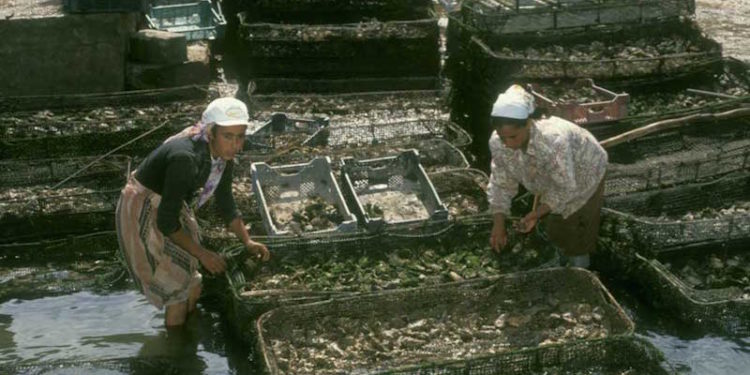A recent meeting in Rabat brought together government officials, industry and academia representatives and aquaculture officers from FAO in support of the development of Morroco’s growing aquaculture sector.
With its 500 kilometres of Mediterranean coast and 3000 kilometres of Atlantic coastline, Morocco possesses a strong tradition of marine fisheries. Its national fisheries production totalled 1.3 million tonnes in 2014, making it the largest maritime fisheries producer in Africa and at the 25th position worldwide.
Fisheries contribute 2.3% to the GDP and the sector creates direct employment for 170,000 fisherfolk and indirect employment to an additional 500,000 people. It is estimated that three million people in Morocco depend on fisheries for their livelihoods.
It is within this context that aquaculture in Morocco is currently emerging. sea bass, sea bream, and shrimp mariculture were introduced as early as the 1950s and experienced expansive growth in the 1980s.
The launch of the national Halieutis fisheries plan in 2009 contains provisions for significant growth in aquaculture alongside continued work in sustainable fisheries, and this has created new momentum for the sector. In supporting its ambition, the government also created a specialised agency two years later, the National Agency for Aquaculture Development.
FAO is working with the Moroccan Ministry of Agriculture and Maritime Fisheries and its National Agency for Aquaculture Development in helping the country to meet its ambitious goal by assessing the achievements of the new national agency in its first years of operation and by identifying ways forward.
Speaking at the opening of the Rabat workshop, FAO’s Representative in Morocco, Michael Hage, welcomed this collaboration between FAO and Morocco, noting the important role fisheries and aquaculture play in achieving food and nutrition security for a growing population.
‘Demand for fish is growing rapidly. Morocco is an important fish-producing nation, where production surpasses a million tonnes, but we must be aware of environmental impacts as demand increases,’ Miachael Hage said. ‘Aquaculture can be a solution. We believe that Morocco is well placed to position itself in the aquaculture sector. The Halieutis strategy launched in 2009 and the creation of the National Agency for Aquaculture Development in 2011 reflect the firm political will to develop a thriving aquaculture sector. The National Agency for Aquaculture Development is poised to serve as a motor that will drive Morocco’s fisheries and aquaculture sectors to prominence.’
During the three days of the mission and workshop, many areas were considered both at the national and regional level, in particular for the five aquaculture development zones mapped by the National Agency for Aquaculture Development. Issues such as the planning process, support to stakeholders, technologies, markets and economics aspects, environmental protection and climate change, social dimensions and the legal aspects.
Malcolm Beveridge, who heads up FAO’s Aquaculture Branch within the Fisheries and Aquaculture Department, highlighted the Strategic Framework that guides the work of the Organisation in contributing to the eradication of hunger, increasing sustainable production, eliminating rural poverty, enabling more inclusive and efficient food and agricultural systems, while increasing the resilience of livelihoods, and explained how it would help the work.
‘Aquaculture in Morocco is a sector with a strong potential to contribute to improving the living standards of all, especially the poorest, in an economically, socially and environmentally sustainable manner and the work we’re now partnering with Morocco in doing will help ensure this,’ he concluded.
Lahsen Ababouch, senior advisor at FAO’s Fisheries and Aquaculture Departments, confirms the great potential aquaculture presents in Morocco and the need to create an enabling environment to attract investors.









